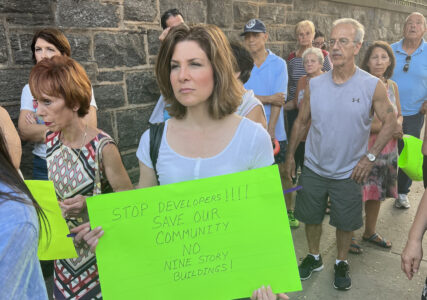Today, Dyker Heights is a neighborhood of spacious and gracious private homes on tree-lined streets, but up until the mid-19th century, the area was a common woodland known by townsfolk as a great source for firewood and construction material.
The neighborhood lies within the 1657 boundaries of what was once the Dutch town of New Utrecht, but farmers neglected it at the time because the land was too sloped for farming. When the people of New Utrecht began cultivating market grain produce, trees in Dyker Heights were cleared for cabbages, potatoes, tomatoes and other produce.
In the late 1820s, Brigadier General Edward De Russy of the U.S. Army built Dyker Heights’s first house, a homestead, at the top of the hill at 11th Avenue and 82nd Street. From a military perspective, this tallest point in southwest Brooklyn, which offered a clear view of the harbor and its defenses, was an obvious strategic choice. In 1888, 23 years after De Russy died, his wife Helen sold the property to Jane Elisabeth Loveridge and Frederick Henry Johnson.
Johnson advocated the annexation of the Town of New Utrecht to the City of Brooklyn, which happened on July 1, 1894, and he was the author of the New Utrecht Improvement Bill.
When Johnson died in 1893, his second son, Walter Loveridge Johnson, took over the family real estate business. He started Dyker Heights on his parents’ property, which he named after the meadow and beach his property overlooks, Dyker Meadow and Beach, named by the Van Dykes who built dykes there to drain the meadow.
Kings Highway, 86th Street, Denyse’s Lane and an unnamed road near 10th Avenue were the only roads present. Johnson got to work installing gas, water, and telephone and electricity lines, and planted sugar maple trees. He built three homes and used the print press to advertise his suburban homes.
He claimed that Dyker Heights was the handsomest suburb in New York because of its location, breathtaking views and careful restrictions. Johnson sold over 100 homes in two years, and Dyker Heights became the neighborhood to which important members of society flocked. In fact, the mass migration of important people moving to Dyker Heights from more socially established neighborhoods, like Brooklyn Heights and Manhattan, threatened the social tone of those neighborhoods.
In 1906, the Dyker Heights Home for Blind Babies opened, with the first public kindergarten for blind children opening one year later. The original building does not still stand, but it began a legacy of important public education reforms for blind children in New York.
Dyker Heights resident Dr. Christian Zaino, the official historian of the Dyker Heights Civic Association, wrote his senior thesis on Dyker Heights, compiling a history that had not yet been fully documented. The information in this article was taken from the extended Wikipedia article Zaino wrote on Dyker Heights’s history.

 Not in our backyard! Dyker rallies to prevent ‘out of character’ nine-story building from being built
Not in our backyard! Dyker rallies to prevent ‘out of character’ nine-story building from being built  Housing going up at Angel Guardian Home site: School also slated to be built at location
Housing going up at Angel Guardian Home site: School also slated to be built at location